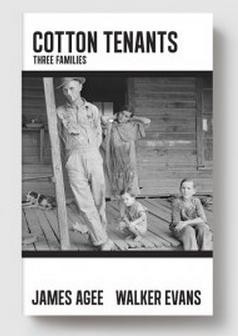Job Open
by The Awl

When we started this site in early 2009, it was with the hope that some things could be different. It is hard to remember back to those dark days, when anything more than 400 words was considered “longform.” But the Internet of that era was a very different place, one where cheap traffic and quick hits threatened to crowd out anything else that required even momentary reflection. (Little did we all know what other horrors would later evolve, but never mind that.)
With considerably more conviction than evidence, we started a place that prized engagement over eyeballs, community over crowd, contemplation over manufactured outrage. And then we went to work willy-nilly, and hoped there were enough people out there who felt the same way.
It turns out there were. As we enter our fifth year, we find ourselves part of an organization that has expanded from two guys typing in winter coats in an unheated room on St. Mark’s Place (RIP Cat the cat) to a flourishing collection of Internet publications which expand on our original mission while remaining true to our core convictions — and remaining entirely independently owned and self-supporting. We have an office, and it has both heat and air conditioning. We have a publisher. We have an associate publisher. We’ve got a new head of technology. And while we are an intentionally lean company — certainly by the standards of this era, in which venture capital has rediscovered “the content business”! — we are now in a position to do much more than we might have dreamed, back when we came out with a tiny site whose viability was roundly questioned by the Internet moguls of that age. Now, to embrace the opportunities your support has afforded us, while still remaining mindful of our founding principles, it is almost impossible for its founders to personally maintain this site.
So we are closing down The Awl, effective immediately.
Kidding! No. Instead, The Awl has grown up, and is therefore in search of an editor-in-chief. We will accept applications through Friday, June 21.
We’re putting this out there publicly for a couple of reasons: we think it’ll draw in candidates that we don’t know or wouldn’t identify ourselves and we think doing this in public is more in keeping with who we are than, like, employing a headhunter.
What are we looking for?
Applicants need to be seriously entrepreneurial in nature and welcoming of risk. The editor-in-chief will need to be able to execute long-term dream-schemes while responding to the horribly immediate. The job combines the thrill of executing a larger vision with the tyranny of managing a constantly overflowing inbox.
This role has a large amount of autonomy, and therefore applicants need to have the attention to detail of a great managing editor, the confidence of an editor-in-chief and the moral compass of a columnist. Most importantly, we are primarily a horizontal and non-hierarchical organization, with an extremely strict no-assholes policy. Behavior is as much prized as talent; genuineness is as valuable as genius.
There are a number of ways to envision the job. It’s not always possible to make a strong manager into an editor, or the other way around. One model is an extremely strong editor who knows how to hire writers and manage freelancers. Another is a strong manager who has great ideas and who knows how to hire exceptional editors. A third would be someone who has primarily been a writer who is also capable of supervising editors or managers. There are surely other models. You may even have one in mind that we haven’t considered.
Finally, candidates need to be based in or around New York City.
Despite all that, you won’t be going it alone: The position reports to us, and will also involve much interaction with the publisher and the head of technology. Oh, and the site comes with two long-standing Awl writers: us.
If you have an interest in the position, please drop Alex Balk and Choire Sicha a note at resumes@theawl.com. Discretion is assured.
We would like to know about your experience. We’d also like you to tell us what you believe works and what doesn’t here at The Awl — and how would you change that. There are no other requirements, and we encourage candidates of diverse or unusual backgrounds. We anticipate a fairly robust response, but you can be confident that all correspondence will be considered and that there’s no need to check back to make sure we’ve received your reply; we have been assured that all our email systems are working fine. In any event, please do your best to let us know why we’d want to work with you, and how you’d help this thing we’ve built evolve. You’ve seen our Awl; tell us about yours. We look forward to hearing from you.
Photo by “Fly_dragonfly,” via Shutterstock.
Bears Enumerated On Internet

The absolute WORST thing about the web is the way everyone is so determined to declare that they are being ripped off, that they had an idea first and their fashion is being masticated by someone else. It is also just as annoying when someone claims credit for a concept or format that has been around forever. You know the first person to do a list? God, whose CMS was stone tablets. You know where the original slideshow happened? On some cave wall in France. (This also counts as the first “animals doing wacky things” post.) There is absolutely nothing new, and it’s beyond ludicrous to try and assert ownership over something as amorphous and universal as an idea. So, keeping that in mind and directing you without comment, go here for what bills itself as “the definitive list of bears, from worst to best.” It’s all good.
Photo by svetara, via Shutterstock
How Much Promiscuousness Is Too Much Promiscuousness?
“Developmental psychologists have found that college-age women do not want to be friends with women judged as promiscuous. Cornell researchers say that in this context, being defined as promiscuous means that a woman reports 20 sexual partners by their early 20s. Investigators found that college women judged the promiscuous women more negatively than more chaste women and view them as unsuitable for friendship.”
You Know Who Else Hated Tipping?

Rich people, mostly, actually. Heh.
Here is the latest series of arguments — yeah, here we go again! — against tipping. It’s discriminatory (when white and black servers are compared, diners tip blacks far less well) (PDF), it’s unfair to restaurant staff, it’s unfair to diners, and apparently it’s unfair to Ayn Rand. Oh sure, everyone loves Kickstarter and “tip your blogger” payments, but someone brings you food and to hell with them.
Pilot Finds Way To Get Kids' Attention
“A group of about 100 high school students traveling from New York to Atlanta were thrown off an AirTran flight, along with their chaperones, after the pilot and crew lost patience with some kids who wouldn’t sit down and put away their cellphones.”
Tonight! Dinner With Two Gessens; Lauren Weisberger, Patti Smith, Richard Haass and Amy Bloom
Today in New York City: would you like to have dinner with Keith and Masha Gessen at BAM? Sure you would! Also Lauren Weisberger, Patti Smith, Richard Haass — and Amy Bloom invites you to lunch with her.
Today’s podcast is sponsored by Audible; we’re giving free 30-day trials and a free audiobook download to folks at this secret link.
James Agee's 'Cotton Tenants' -- And Why We're Only Reading It Now
by Ted Scheinman

In the early 80s, William F. Buckley, Jr. offered David Brooks a job at The National Review on the strength of Brooks’ parody of Buckley in the undergraduate newspaper at the University of Chicago. (“Buckley spent most of his infancy working on his memoirs,” etc.) Some five decades earlier, James Agee found himself in a parallel, if far less ideologically stable, arrangement.
As a serious undergraduate poet at Harvard, Agee helmed an ambitious and withering satire of Henry’s Luce’s Time in an issue of the Harvard Advocate that went comparatively viral. Like any mogul, Luce knew that it’s better to have someone in the building throwing bricks out the window than outside throwing in, and he hired Agee as a staff writer at Fortune.
In one of the introductory passages to Let Us Now Praise Famous Men, Agee wrote: “Every fury on earth has been absorbed in time, as art, or as religion, or as authority in one form or another. The deadliest blow the enemy of the human soul can strike is to do fury honor.” Notionally, Agee is bewailing the sanitization (even “castration”) of potentially subversive artists and visionaries — Swift, Joyce, Kafka, and so on. But it’s difficult to read this passage without also sensing a measure of autobiography. If you can’t beat them, hire them — a familiar capitalist creed that typifies the “establishment” that Agee loathed, and whose checks he cashed.
Like a lot of literary types born out of state and then schooled among the idle rich of the Northeast, Agee’s shoulder-chip was sizable. Distrusting the insularity of his aristocratic classmates, Agee was primed to despise the insularity of the New York literary world into which Luce’s lucre ushered him. In a short personal testimonial appended to the 1960 reissue of Let Us Know Praise…, photographer Walker Evans wrote a beautiful three-page elegy called “James Agee in 1936,” published standard with most subsequent editions. “He didn’t look much like a poet, an intellectual, an artist, or a Christian, each of which he was,” Evans wrote. “Nor was there outward sign of his paralyzing, self-lacerating anger”:
Anyway, he was in flight from New York magazine editorial offices, from Greenwich Village social-intellectual evenings, and especially from the whole world of high-minded, well-bred, money-hued culture, whether authoritarian or libertarian. In Alabama he sweated and scratched with submerged glee…. His clothes were deliberately cheap…. [And] here he occasionally confused his purpose, and fell over into a knowingly comical inverted dandyism. He got more delight out of factory-seconds sneakers and a sleazy cap than a straight dandy does from waxed calf Peal shoes and a brushed Lock & Co. bowler.
Evans describes Agee’s spirituality as something “ex-church or non-church, an ingrained courtesy, an uncourtly courtesy that emanated from him towards everyone, perhaps excepting the smugly rich, the pretentiously genteel, and the police. After a while, in a round-about way, you discovered that, to him, human beings were at least possibly immortal and literally sacred souls.”
Agee, then, felt the pressure of two distinct moral burdens as he arrived in Hale County in 1936: The suspicion that the families he met in Alabama would be paraded before Fortune’s readers like so many zoo animals; and the creeping knowledge that he himself was at risk of becoming the literary equivalent of a tenant farmer: dreaming of wheat but publishing chaff.
Fortune had also recently killed a rather accusatory piece by Agee about the high-stakes orchid trade, an aesthetically immoral pursuit among the uber-wealthy at the height of the Depression. Fortune was realizing that its flight of young and vigorous 1930s radicals was not house-breakable; one of Agee’s fellow-staffers and friends had recently quit the magazine out of loyalty to the New Deal. Agee, as he himself would later observe, was becoming a marked man. The spike in the Fortune offices had developed a taste for blood.

The easiest text to use as a symbol is an unread one; so much the better if no one has read it. James Agee died in 1955, at the age of 45, leaving behind a motley and enduring body of journalism, several excellent screenplays, a mere two books, and an oversize hole in the American conscience.
Agee also left behind what might be the most famous spiked manuscript in the history of reporting: his 30,000-word article for Fortune about the lives of tenant farmers in the Depression-era cotton belt.
That 1936 manuscript remained a ghost for 70 years, speculated over in hushed tones, particularly by the people who professed abiding devotion to Agee’s Let Us Now Praise Famous Men, first published in 1944 and republished in 1960 — whether or not they had finished, or even begun it.
SUNY’s Alan Spiegel, author of James Agee and the Legend of Himself, calls such acolytes “Ageeans” (a wonderful pun — as though they’re subjects of Theseus!), and draws a sharp little cameo of the casual Ageean:
Let’s admit that there is an Agee dilettante, for instance, who knows this writer by not that much more than his odd name — first and seventh letters of the alphabet uttered in quickstep — remarkable face, and the muzzy association of these with the croon of beautiful words, the fierce pride of starving farmers, and democratic vistas lowering everywhere like cardboard backdrops on the southern soil.
Spiegel nails the common sentiment that LUNPFM is the book that few begin and no one finishes. Whether it goes read or unread, Agee’s greatest work remains the tome that launched a thousand “new journalists.” Its slender, vanished ür-text has served as a convenient idol for dissident reporters, as well as for those who regarded Agee as a poet who happened to write journalism. Hugh Davis captures this variety of adulation in The Making of James Agee: “Agee’s disciples were less interested in literal truth than in constructing a myth that did justice to the artist and friend they admired.”
And so, the myth of the Alabama article that was too hot to publish? It had to be a genre-busting, luxuriantly perceptive, brilliant piece of muckraking — no doubt.
Cotton Tenants is available today from Melville House and The Baffler.
• Powell’s
• Amazon
Less dewy-eyed critics have shaped the ghost-article to support whatever interpretation of Agee they happen to be nursing at the time. Laurence Bergreen’s 1984 biography extrapolates a speculative account of the lost article and its disappearance, based on letters from Agee to Father Flye, Agee’s old boarding-school tutor and a lifelong confessor for the writer. But Bergreen is clearly conflating the magazine article with LUNPFM — not least in his assertion that the piece ran “’several hundred thousand words.” (The actual number is very close to 30,000.)
In 2005, Times book critic Dwight Garner wrote in Harper’s: “What Agee experienced in Alabama was, he recognized, too intense to be prettified and distilled for Fortune’s clubby, well-to-do subscribers, and he filed a rambling story he was sure the magazine would not print. It didn’t.”
This may be true. Other accounts, including Bergreen’s, suggest Agee was in fact outraged that the piece never ran. Walker Evans once said, though, that Agee knew it was doomed.
More recently, in November of 2011, basing his characterization on Bergreen’s own, Times editorial page editor Lawrence Downes wrote
: “Agee’s article, brilliant yet bloated with guilt and literary grandeur, was rejected by the magazine, which had been expecting something readable.”
The problem is that neither Garner nor Downes nor Bergreen could possibly have read the thing. John Summers, editor of the The Baffler, was one of the very few who had. The special collections librarians at the University of Tennessee, who had unearthed the manuscript in 2005, had sent Summers a facsimile.
In a response to the Times, Summers offered a collegial reproof: “James Agee’s article about sharecroppers in Alabama, which he turned into a book in 1941, has never been published or found in any public collection of his manuscripts. Fortunately, people can soon read it and judge for themselves.”
In March of last year, Summers released the first excerpt in issue 19 of The Baffler. This month, Cotton Tenants: Three Families appears in full, in print, for the first time ever.
Far from “bloated,” Cotton Tenants reads with the spare and measured beauty of a writer who knows that under the social circumstances he can only allow himself so much. It is a deeply moving work, in which the central character of Let Us Know Praise… — the writer himself — is all but invisible. In short, it is a hitherto undiscovered species: a masterpiece of self-restraint, written by James Agee.

“There is about the younger children, about their skin and eyes and hearing and emotions, such an unsettling burn and brilliance as slow starvation can only partially explain.” — Cotton Tenants

“Picking is simple and terrible work.” Agee writes in the “Picking Season” section of Cotton Tenants. Simple and terrible are the defining characteristics of the stories Agee tells of life in Hale County, Alabama. The text is inherently passive-aggressive, sidestepping the explicit tirades of Let Us Know Praise… but suffused with a moral indignation that animates Agee’s characteristic hyper-empathy. He describes, in simple terms, the material lives of the Burroughses, the Fieldses, and the Tingles — the families’ ever-fluctuating earnings, their respective acreage allotments, the ragged stuffs from which they spin their clothes, the withered planks that leave tenant-houses open to the Alabama elements. If Agee’s response to the scarred folk of Alabama was one of terror and tears, he marshals his material in Cotton Tenants with a certain ironic distance, often allowing the flatly asserted truth to offer its own condemnation.
And the cotton belt, for Agee, “sixteen hundred miles wide and three hundred miles deep,” as he writes in the introduction, is indeed a land of scars. A place of steady suffering becomes as much a landmark to Agee as the general store or the landlords’ manses: “Out to the right of the [Burroughs] house, caught within palings against the hunger and damage of the animals, is a patch of land a little bigger than a tennis court: this is the garden.” (The choice of “tennis court” to establish scale is no accident — nothing if not an accusation.) The Burroughs’ spring, meanwhile, “tastes sad on the mouth.” For Agee, land bears the history of the anguish of sentient beings who have trodden it. There is something at once holy and singular about this vision. Would Google Maps tell you to “take a right at the hunger and damage of the animals”? Probably not. (Yelp has very little to say on the emotional state of the local aquifers.) But economic reality and emotional wounds are inseparable for Agee. Cotton Tenants breathes with the capacity of souls to break, or to regress into some former, lesser version of themselves, given sufficient poverty and ill-education. The portraits he draws of cruelty between the youngest children of the Burroughs, Tingle, and Fields families feel straight out of East of Eden.
“Brilliant yet bloated with guilt and literary grandeur” — Downes’s characterization of the manuscript — is hardly a marketable blurb, and it’s also a very poor description of Cotton Tenants. There is an important difference between “bloated with guilt” and, let’s say, “loaded with indictment.” Cotton Tenants is far closer to the latter. It is a study of the subconscious erosion of selves, of the effects of extreme malnourishment, bodily and spiritual, on the human animal. It is an indictment of anti-Roosevelt moguls, yes, but also of misguided reformers, the “Bureau of Charities,” and anyone so foolish as to donate “summer shoes” to tenant farmers: “Summer shoes, in a warm country, are as useful as neckties for polar exploration.”
Here it seems useful to note the two most common pronouns in the text: “you” and “we.” The “we” can mean various things in various places — “we,” the authoritative voice of a fancy magazine; “we,” Walker Evans and I, two subversives at large; “we,” the literate, who can read the life stories of those who cannot. But the “you” is far more important, as it enlists the reader in the labor of the families: “If you have only one mule you break what you have time to…. If you have done all this right you haven’t got a blemish in all your land that is not broke: and you are ready to plant.” Cotton Tenants is not, in a friend’s phrase, “poverty porn,” because it is not abstract but granular, not voyeuristic but embedded.
Agee does his best to highlight moments of joy that flicker in the text like Technicolor in a black-and-white film. Christmas: “It would warm the cockles and, very possibly, the ventricles of any good Dickensian to see how delightedly Newton, on those happy occasions when another chicken is killed, tackles the gold bone feet.” The too-infrequent trip to the cotton gin: “A raw, festal quality… in its hard, slack, sullen way, [the trip] is dancelike and triumphal.” And only Laurence Sterne can write mules with such humor and pathos.
Details: Arsenic is very good for killing army worms. The superiority of the spring-toothed harrow during picking season is self-evident. The average staple-length of cotton in Hale County is 7/8 of an inch to an inch. A strongish, not too hungry man can pick 300 pounds of cotton in a day; young children, sometimes as much as 150. At night, they trudge home to dine on winter greens “cooked to the texture of shoetongues.” A room is massaged into holiness by the feet of lost souls:
The pinewood, its grain stormplaned, stormsilvered and sharp in the eye as razors, is lovelier than watered silk; a fact which is not appreciated by those whose bare feet smooth its floors and whose bodies revolve through living among the frail cards it lifts against the weather, and whose lives are trapped in it.
It is this devotion to the material facts of existence in Hale County that both animates and grounds Cotton Tenants.
It is a far more welcoming text than Let Us Now Praise Famous Men, because it more or less partakes of an actual genre; its prose is far less “Elizabethan,” to borrow Evans’s term.
For all its spiritual interrogation, it is a piece of reporting. Yes, it’s long for a magazine article by current standards. As an eminently portable book, on the other hand, Cotton Tenants is fresh and painful reading. One needn’t skim Adam Haslett’s sensitive introduction to recognize that inequality isn’t exactly a closed subject, as Agee knew it would never be. From pain and squalor, Agee managed to wring a sense of wonderment at the families’ simple survival. Again blending man and land, Agee invites us to join him in marveling: “Consider seriously whether it is not remarkable to the point of nausea that a plant nurtured in such soil should manage to live not in any full health nor in any fulfillment of its form, but at all.”
Ted Scheinman is a culture reporter based in Chapel Hill, North Carolina. Follow him on Twitter. Cotton photo by Jay Phagan. Cotton pickers photo from the Southern Tenant Farmers Union Photographs collection at Cornell’s Kheel Center.
Long Word Less Long Than Previously Rendered
“The Maori placename Taumatawhakatangihangakoauauotamateaturipukakapikimaungahoronukupokaiwhenuakitanatahu is not quite as lengthy as we rendered it in a panel accompanying an article about very long words. Our spelling twice included a stray j — a consonant that does not appear in the Maori language.”
Boston to New York City, June 3, 2013

★★ The sky was emptying itself out. A woman in flip-flops trudged straight through a full, streaming gutter, pushing a stroller. There was no shelter or relief between the cab stand and steps up to the door of South Station, and the winding ramp was not even worth considering. The concrete trough between the rails was a pond. For a while, the rain and condensation and drops on the windows combined to be almost opaque, but then somewhere east of East Haven the sun came out. Then on the approach through the Bronx into Queens, there was an orange tinge to the light, and gray was covering Manhattan. Ominously cool, wet air flowed down the steps of the 66th Street station as the elevator arrived. Still, the darkening clouds held back while the luggage and stroller rolled home. The radar showed a hard, tight line advancing. The sky over New Jersey had gone past dark into bright silver when the first drops hit the window. Then the silver was everywhere, and the far shore was almost invisible. The pizza man in his slicker got 20 percent. The sun made its curtain call and descended, red as cherry candy.
Will Angry Legos Make Angry Children?
“Angry Lego faces could have a significant impact on how children play, a University of Canterbury robot expert says.”
